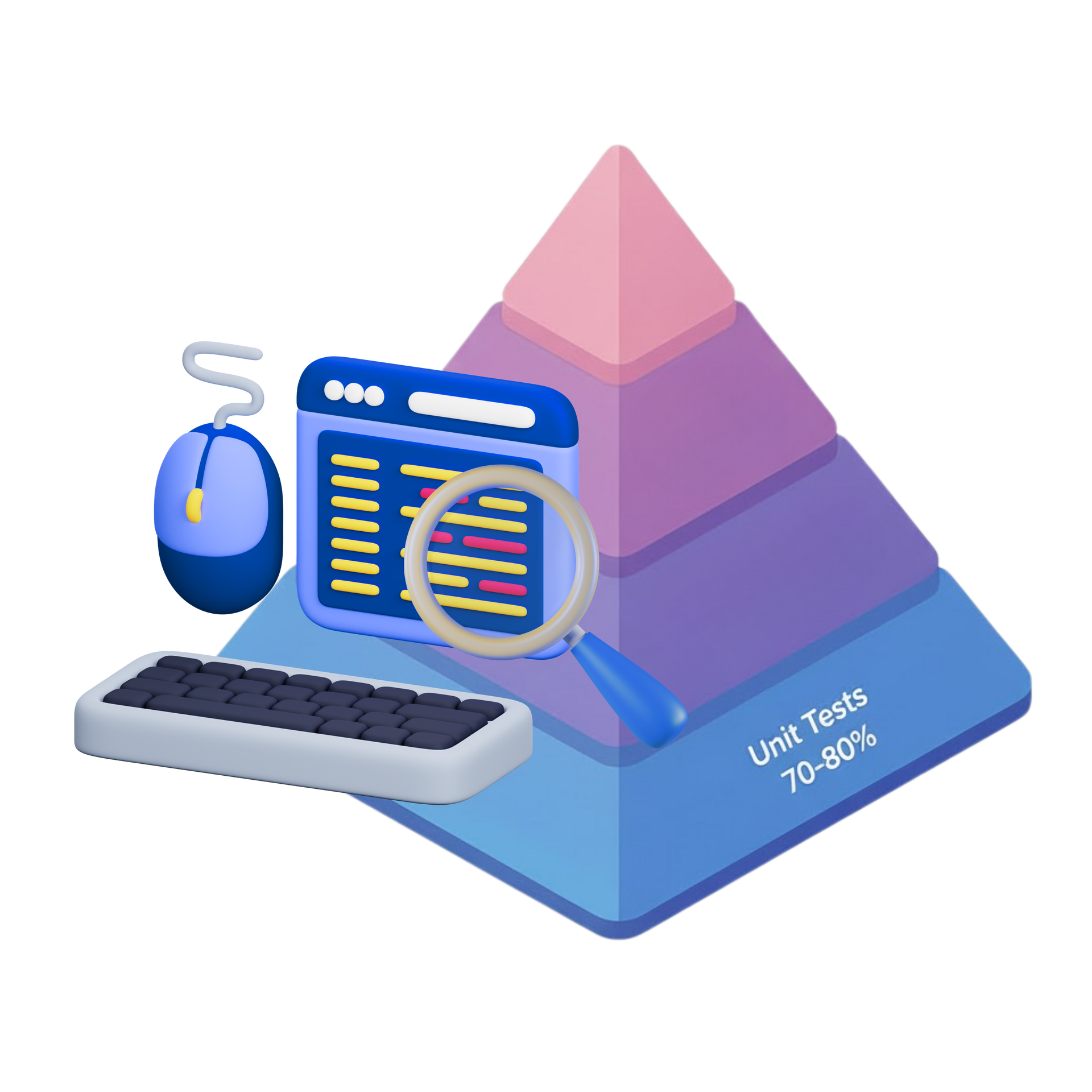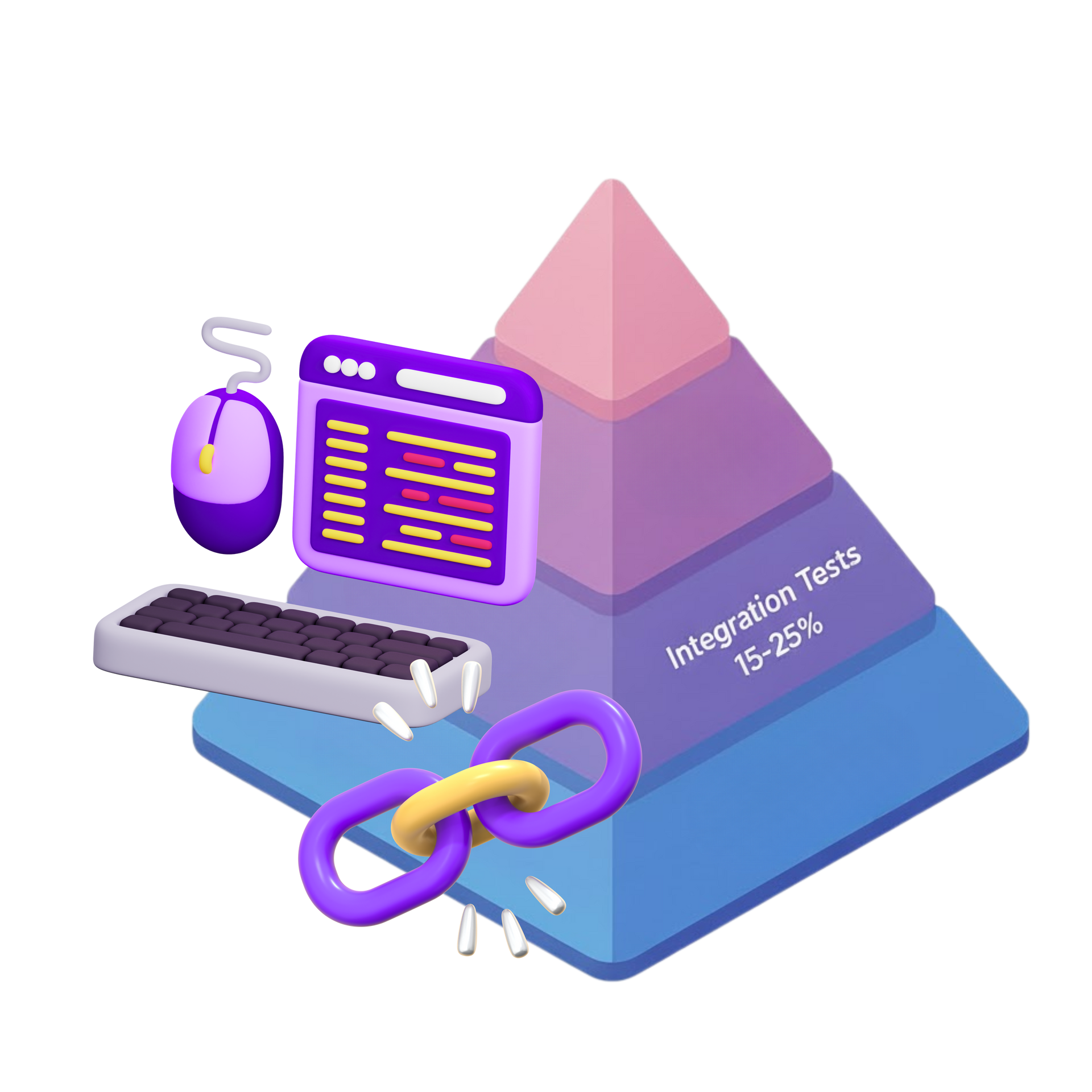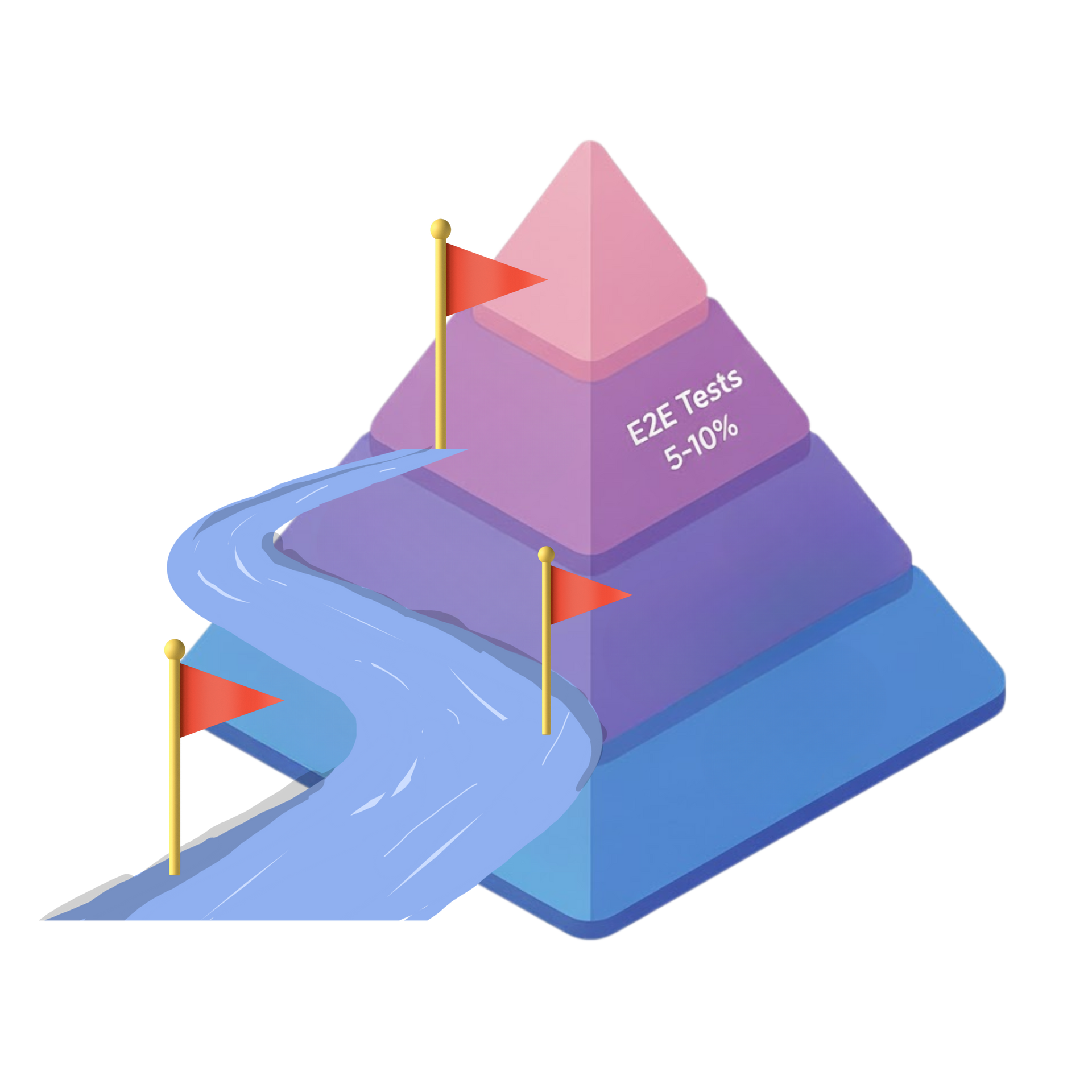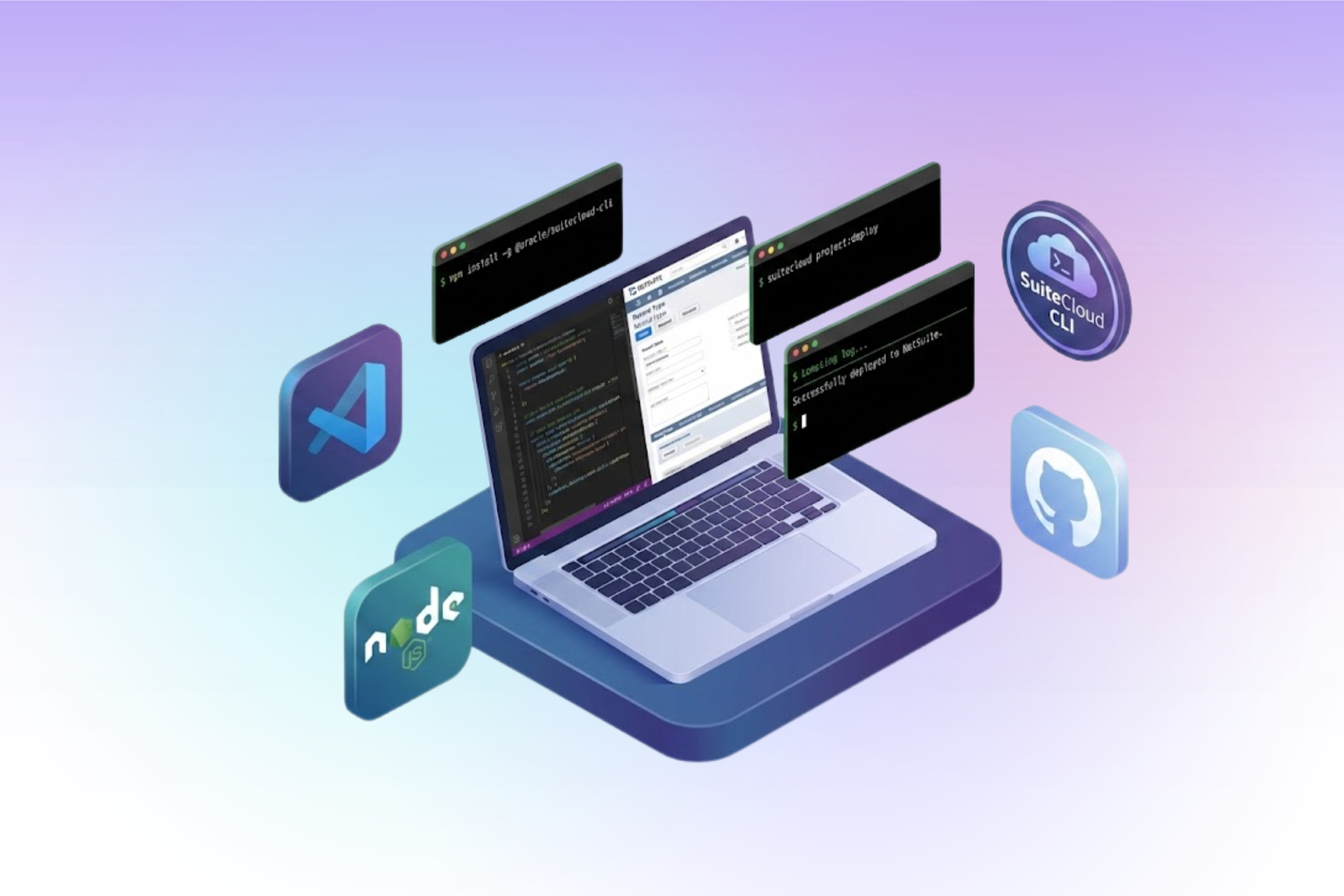Mastering the Testing Pyramid: Smarter Testing for NetSuite Devs
Why the Pyramid Matters
Most bugs slip through at the entry points. A User Event script forgets to set a field. A Map/Reduce silently skips records. Your unit tests pass, but the flow still breaks.
That's when the Testing Pyramid stops being theory and becomes survival. Not all tests carry equal weight. Some are fast but narrow. Others are realistic but slow. Teams that don't balance them end up drowning in flaky end-to-end tests—or having none at all.
The pyramid offers a better path: fast checks at the base, integration tests at the seams, and just enough end-to-end coverage to protect what matters most.
Understanding the Three Layers

1. Unit Tests: Your Foundation (70-80%)
Unit tests form your pyramid's base for good reason. They're fast, cheap, and catch logic bugs before they ever touch NetSuite. For NetSuite developers, the key is mocking adapters to keep helpers testable without hitting the actual platform.
Scope:
Pure functions, helpers, small classes
Speed: Milliseconds
Goal: Catch logic bugs before they touch NetSuite
Example: calculateTax(1000, { vatRate: 0.12 }) → 1120
NetSuite Tip: Mock adapters around N/record or N/search to keep helpers testable
2. Integration Tests: Protecting the Seams (15-25%)
Integration tests verify that script entry points behave correctly when NetSuite calls them. These tests take seconds to run and focus on the places where things actually break—where individual pieces work fine but fail when NetSuite triggers them.
Scope: Script entry points (User Events, Map/Reduce, Scheduled Scripts, Suitelets)
Speed: Seconds
Goal: Verify scripts behave correctly when NetSuite calls them
Examples:
User Events: Simulate beforeSubmit with a stub record, confirm required fields get set
Map/Reduce: Feed a record ID to map, verify updates queue properly
Scheduled Scripts: Run execute with a fake runtime, check it processes search results as expected


3. End-to-End Tests: Business Insurance (5-10%)
E2E tests confirm critical business flows work across the full stack: UI to backend to database. These tests take minutes to run and should cover only your most vital journeys—treat them as valuable insurance, but too expensive to overuse.
Scope: Full user journeys across UI → backend → database
Speed: Minutes
Goal: Confirm critical business flows still work
Example: Upload bill → auto-match → approve
NetSuite Tip: Use Playwright against Suitelets or custom React UIs; add data-testid attributes for stable selectors
Where to Start: Prioritizing Your Testing Effort

1. Unit Tests — First Priority
Start here. These tests are fast, inexpensive, and foundational. They catch logic errors before code ever reaches NetSuite, saving you from costly debugging later
2. Integration Tests at Entry Points — Next Priority
Protect the seams where breaks actually happen: beforeSubmit, afterSubmit, Map/Reduce steps, Suitelet requests.
Many teams feel the most pain at these entry points. Learn from that experience and invest here early..
3. End-to-End Tests — Final Layer
Cover only your top business flows. Treat E2E tests as insurance: valuable, but too expensive to overuse.
Focus your team's energy in this order. You'll achieve the best balance of speed, confidence, and long-term maintainability.
Making the Pyramid Work in Practice
- On Pull Requests: Run unit tests, integration tests, and one smoke E2E test. Keep feedback under 10 minutes.
- Nightly: Execute the full E2E suite along with performance and security checks.
- Rules of Thumb:
- Logic changed? Add a unit test
- Entry point touched? Add an integration test
- New user flow? Write one E2E test

Why This Approach Works
Here's what experience teaches: more E2E tests don't equal more safety. They just mean more flakiness and slower feedback.
When teams shift focus to unit tests plus entry point integration tests, they stop firefighting every release. Deployments become predictable. Confidence grows.
The pyramid isn't about writing
more tests. It's about testing
smarter.
Build a strong foundation with fast unit tests. Protect your entry points with targeted integration tests. Crown it all with just enough E2E coverage to guard what users actually care about.
That's how development teams ship faster without fear.
Build Better Testing Practices
Implementing the Testing Pyramid requires more than knowing the theory. It takes systematic practice, team alignment, and proven patterns for NetSuite development.
At ATSOURCE, we help NetSuite teams establish testing practices that catch bugs early while maintaining development speed.
Contact us today to learn how we can help your team build robust testing practices that protect quality without slowing delivery.
Meet the Author
Jona has over a decade of experience in SuiteCloud Development on the NetSuite platform. She specializes in implementing advanced solutions and has led teams in creating high-quality software. Jona holds multiple certifications and has been recognized with awards like the Summit Award and Quality Champion Award.
Tags
Accelerate ERP Success with Expert Solutions
Ready to put what you've learned into practice? ATSOURCE delivers both the specialized talent and comprehensive NetSuite support you need to turn strategy into results.Connect with our experts today and move from planning to performance.





